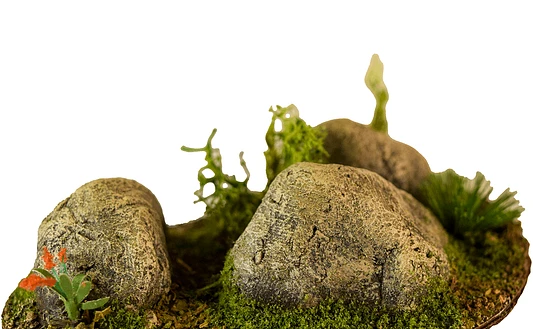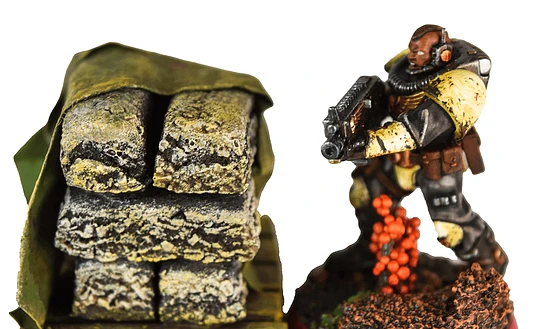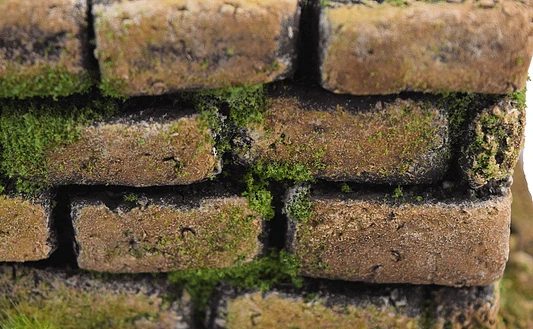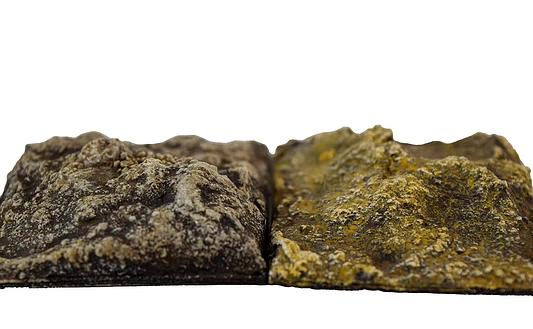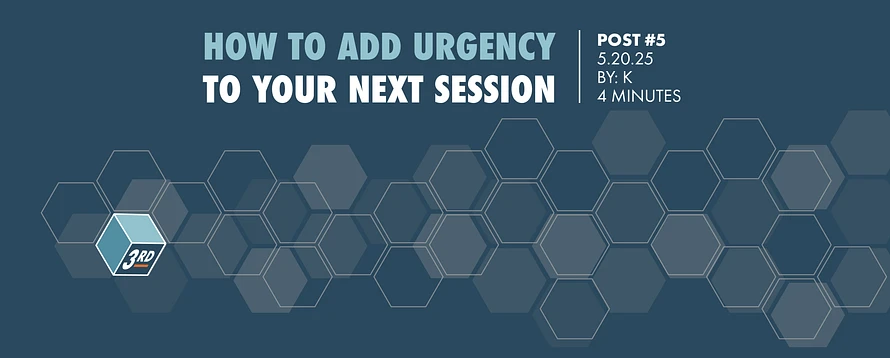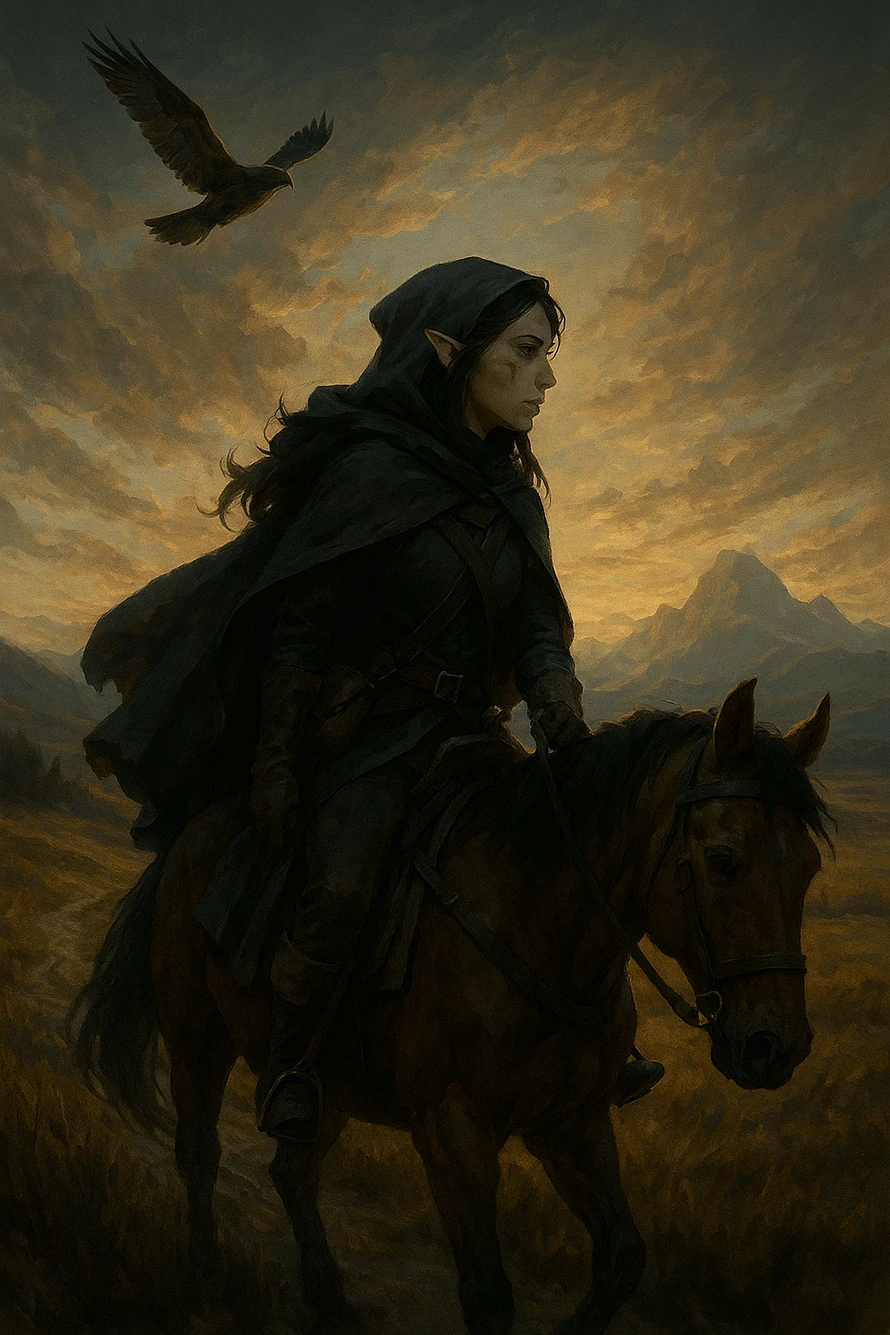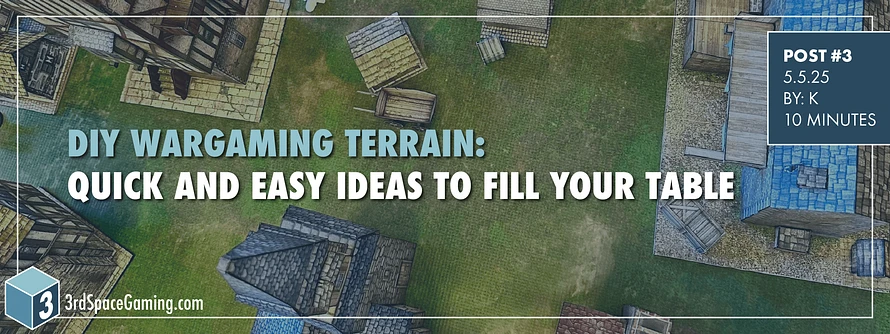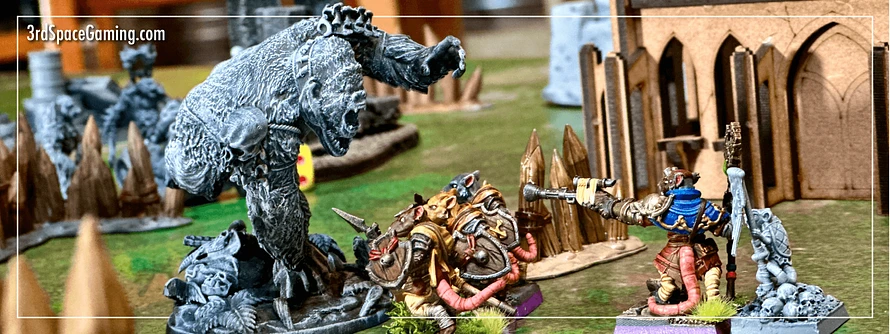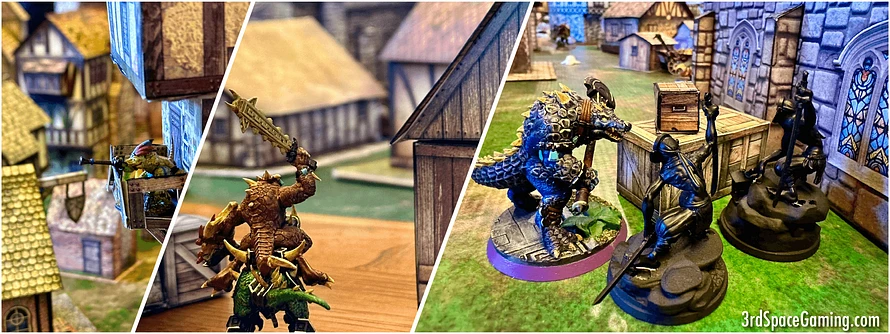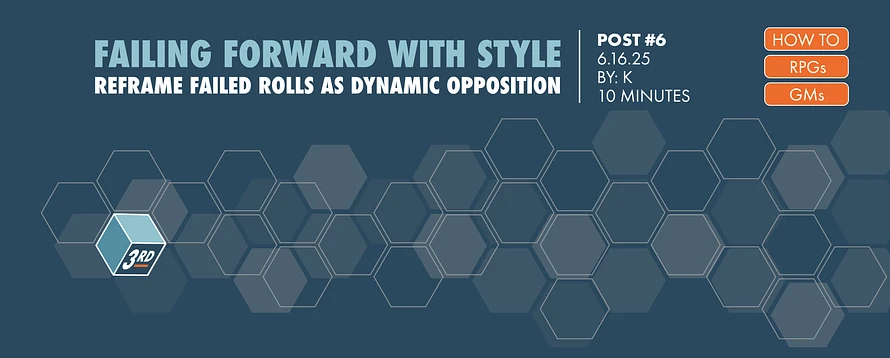
Here’s a familiar scene for many veteran RPG groups: in the heat of battle a powerful, high-level player character steps up in dramatic fashion to take on the Big Bad. They raise their weapon high, violently charge, roll to attack, and… miss. The dice come up short. The table deflates.
Embarrassed, the player quickly scans their character sheet to see if there’s any other action they can take to help move the action forward. “Welp, I guess that was my turn.” The player, with red cheeks and head drooping, grabs the offending dice and sticks it in a timeout to try and coerce it into performing better next time.
What could’ve been a key moment instead turns into a non-event. A moment that should have thrilled instead fizzles. Why? Because the failure feels flat. It is treated as an absence of action rather than a conflict packed encounter between two equally potent adversaries.
But what if failure isn’t about flubbing the attempt? What if it’s about meeting real resistance? And what if those failures are used to improve the conflict and move the narrative forward instead of just “waiting for the next turn”?
This article explores one of the most effective narrative techniques a game master, and the whole table, can adopt: treating failed rolls as moments of opposition rather than character mistakes or utter failures (unless of course it is a natty 1). Whether you're running tactical combat or roleplaying investigative sessions, this approach turns mechanical misses into narrative opportunities. The result is a more immersive world, a greater sense of conflict, and a table full of players who stay engaged even when they roll low.
FAILURE ISN'T THE END. IT'S THE START OF A STRUGGLE.
Not every game system is susceptible to the failed roll pitfall. Many systems include opposition or defense rolls that make battle or skill encounters a bit more dynamic and dramatic instead of just the classic “save or suck” type roll that only grants agency to the character whose turn it currently is.
Shadowrun is one of the better examples of this as combat rolls are made in opposition to each other, but still incentivizes decisive action by giving any ties to the attacker. This makes encounters feel more real, unpredictable, dynamic, and dangerous instead of a neat and orderly progression one-by-one through the initiative order.
And while there are systems that have mechanically fixed or mitigated this issue, it is a persistent problem in the most popular systems like Dungeons & Dragons and Pathfinder. Traditionally, in those systems, we describe a failed roll as the character trying to do something but falling short.
“You swing and miss.”
“Your lockpick snaps.”
“You don’t notice anything.”
These responses work functionally. But they’re static. Nothing pushes back. Nothing changes. And if nothing changes, then nothing happens, and the failure becomes a void.
Now compare that to something more active:
“You lunge forward with a precise strike, but your foe twists their shield just in time, sending your blade glancing away in a shower of sparks.”
Here, the miss becomes a duel. The player’s competence is respected, and the world is alive and reactive. Even though the result is the same mechanically, it feels different at the table. It feels earned. It feels real. And most importantly it still allows the opportunity for the player to contribute something to the situation, whether through narration or flavor.
Taking this one step further, even “failures” can enrich the story in meaningful ways. If a player character just barely misses a strike on the Big Bad, maybe that is turned into a glancing blow that grazes their cheek. Mechanically no damage is done, but it allows for some real flavor and builds on the conflict.
“The boss barely parries your blade and sparks fly as steel collides with steel. As he regains his footing you notice his hand clasps his cheek and comes away bloody. Rage smolders in his eyes as his gaze raises from his bloody hand to fix on you.”
In this example mechanically nothing has happened, but this allows the opportunity for the Big Bad to zero in on the character who bloodied him. It also opens the door for some longer term character growth and development. Maybe the Big Bad was never going to fall in this battle, but that scar on his cheek is a permanent reminder of how close the party came to ending his life. This means that there still is story progression and meaningful change even when the player “fails” their attack.
WHY THIS MATTERS MORE AT HIGHER LEVELS
This shift in thinking is especially important for high-level characters. These adventurers are meant to be exceptional. In some cases they have been adventuring for their entire lives. Both improving their skills and their gear. If they fail, it shouldn't feel like they forgot how to do something basic like swing a sword. It should feel like they met an equally impressive adversary. They are still strong, but something strong pushed back.
When we describe failure as if the character simply messed up, it creates a disconnect between who the player imagines their character to be and how the world is treating them. Instead, failure should reflect meaningful opposition or a miscalculation of the situation.
When a veteran rogue fails to disarm a trap, maybe the trap was unusually complex. When the bard fails a seduction attempt, perhaps it is because the target is a recent widower who is offended by your advances. When the barbarian misses an attack, it could be because the enemy was fast enough to duck or had trained to deflect such blows.
This approach keeps the characters competent and the world dangerous. It reinforces the fantasy instead of breaking it.
TURNING ROLLS INTO RIVALRIES: PRACTICAL TECHNIQUES
In any good story, conflict drives momentum. This is just as true in tabletop roleplaying games as it is in novels or film. If you treat failure as a dead end, you lose dramatic energy. If you treat failure as an active struggle, you build tension.
The beauty of this approach is that it doesn’t require major rule changes. You just need to reframe your narration. Here are three ways to do that right away.
1. Narrate the Opposition, Not the Absence
The easiest fix is to stop describing what didn’t happen and instead describe what did.
Instead of “you fail,” try:
- “The ogre steps to the side with surprising speed, and your sword cuts only air.”
- “You feel the lock shift under your tools, but then it tightens again with a faint click, as if pushing back.”
- “You get distracted in your search by a small tome. After thumbing through it quickly you realize that it is a transcription of regional oral stories. Some going back centuries.”
- “Your shot misses the mark, but ricochettes off of a tangle of meat hooks dangling right behind the big bad.”
Now the miss feels like part of the scene. The world isn't static. Just waiting for the characters to act on it. It's resisting. It also allows for exposition and exploration. Even if they didn’t discover what they were looking for, they discovered something else that fleshes out the world. Offers new opportunities. It didn’t mechanically advance the story, but it does enrich the story and still “gives” the player something.
Consider turning failures into stepping stones rather than stopping points. A failed arcana check might not reveal the full truth, but it can uncover something confusing or unsettling. A failed stealth roll might not trigger combat immediately, but it could raise suspicion or start a countdown. A failed attack might not land a fatal blow, but it could corner the enemy and lay the foundation for a deadly round next turn.
Instead of saying "nothing happens," let something partial, new, or flawed emerge.
2. Create Momentum with Every Outcome
“Progress isn’t always a straight line” is probably the easiest way to summarize this point. When a character fails, something should still change. Failure doesn’t mean that nothing happens, just that something different happens than what the player originally intended. How much different is determined by the dice roll.
Did you give away the group’s location by alerting security? Did the enemy gain insight into your motives or plans? Did an ally lose confidence?
Think about what the scene looks like after the failed attempt. If everything is exactly the same, you've missed an opportunity to move the story forward. And it doesn’t always need to be much movement, just some.
As with the example above with the meat hooks. Maybe that reveal sets the stage for the next turn when the barbarian bull rushes into the Big Bad, knocking them back into the meat hooks. The Big Bad is now skewered and tangled in the mess of rusted chains, waiting to be interrogated by the group. A negative roll revealed something specific about the world, that again, opened up further possibilities and enriched the encounter.
3. Ask Why It Failed
Not all failures are created equal. To make them meaningful, start by asking one simple question: Why did this fail? What actually caused the setback? What element of the world or scene opposed the action? Why didn’t the action play out how the character anticipated?
This isn’t about mechanics, this is about story. Every failure has a reason, and discovering that reason adds depth to the moment. In general, reasons can be internal or external. An external force pushes back. Or an internal flaw is exposed. Both kinds of reasons have their time and their place.
If there’s an external why behind the failure it shifts the focus from character incompetence to in-world conflict. This helps players feel like their characters are still skilled and capable, even when things go wrong. It also gives the GM more tools to foreshadow, build tension, and introduce consequences that ripple beyond the roll.
If there’s an internal why behind the failure it allows the player to flesh out their character’s motives, backstory, or thoughts. Maybe the rogue failed to pick the lock because she is currently worried about her kidnapped brother. Maybe the spell fizzled because the party has been in a series of constant battles that is wearing them down. Or perhaps seeing an enemy employ a particular fighting style awakened buried memories of a past mentor and threw the fighter off balance.
By grounding each failure in a specific cause, you avoid the feeling that the dice are simply being cruel. Instead, the narrative begins to reflect a living, breathing world with real stakes and active resistance. It reminds players that they're operating in a space full of opposing forces that push back. It invites the table to lean into the story, not pull away from it.
ELEVATE YOUR ADVERSARIES
One of the best side effects of this approach is that it automatically gives your NPCs and monsters more depth and character. An orc that deflects a blow with a roar or spins out of the way with brutal grace becomes more than a stat block. It becomes memorable. Even minor enemies can feel dangerous and real.
For boss fights, this kind of reactive narration adds cinematic weight. When a villain consistently dodges or counters the players’ actions, it builds emotional investment. Every miss becomes a reminder of how formidable the enemy is, and every hit becomes more satisfying when it finally lands.
INVITE PLAYERS TO NARRATE THEIR OWN FAILURES
Another powerful tool is giving players a voice in how their failures play out. When a roll comes up short, ask:
- “You missed, but what does it look like when your enemy turns the tables?”
- “You fail the persuasion. Why do you think they resisted?”
- “What causes the magic to go off course?”
By handing over some of the narrative responsibility, you allow players to frame their failures in ways that reflect their character’s personality, competence, and flair. A missed attack might become a narrowly dodged blow. A failed deception might reveal a subtle tell that gives the target pause.
This approach has several benefits:
- It reduces the creative load on the GM by distributing storytelling duties
- It keeps players actively engaged, even during setbacks
- It avoids the trap of the GM always being the “bad guy” who delivers bad news
- It reinforces the idea that the world is shaped by everyone at the table, not just the person behind the screen
Most importantly, it transforms failure into a shared narrative moment. The player isn't just waiting to hear what went wrong. They're helping describe the struggle.
SAMPLE SCENE: SAME DICE, BETTER DRAMA
Let’s look at how different narration changes the feel of the same mechanical miss.
Standard version
Player: I swing at the bugbear with my longsword.
GM: You rolled a 13. That misses.
Player: Alright, I’ll get him next round.
Narrative version
Player: I swing at the bugbear with my longsword.
GM: You rush in with a sharp diagonal slash, but the bugbear reacts just in time. It grunts and throws up its weapon, turning your blade aside with a clang. It snarls and raises its club, ready to strike back.
Collaborative version
Player: I swing at the bugbear with my longsword.
GM: That’s a miss. How does the bugbear avoid the blow?
Player: I think it’s because the cobblestones under foot are slick with rain and the accumulated gore from battle. My character slipped, causing my blow to be easily deflected.
Same mechanics. Much better energy. This allows the player to still contribute to the scene, even if they aren’t a superhero at the moment.
FAILURE AS A CATALYST
It’s natural to think of high dice rolls as the highlight of the game. And to be fair, rolling a natural 20 is undeniably exciting. But failure is often where the best storytelling happens. It’s where characters are tested. It’s where new challenges appear and stakes are raised.
When you treat failure as meaningful opposition instead of meaningless error, you create a game world that feels alive, reactive, and full of momentum. And when you invite players into the process of narrating those failures, you foster a truly collaborative table, one where everyone helps tell the story, not just when they win, but when they fall short too.
So, next time a roll comes up short, don’t just say “you fail.” Show what pushed back. Invite your players to help describe the moment. That subtle shift changes everything.
Because when you fail, be sure to fail forward with style.







